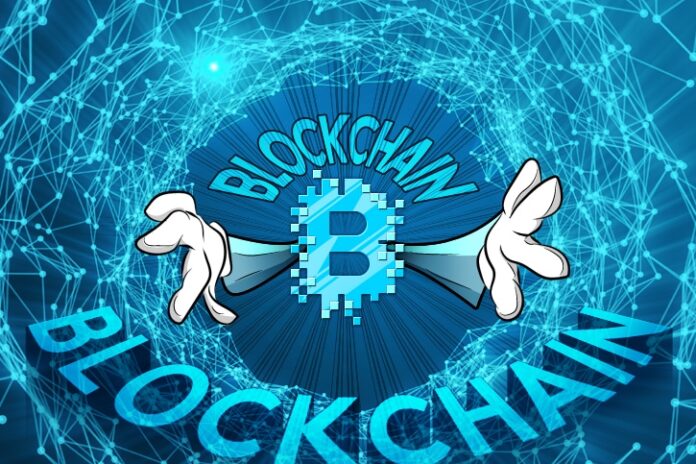
BLOCKCHAIN
What is a blockchain?
The blockchain is a greatly distributed ledger where you can record, with security, everything you want to fix in a stable and secure way without a mediator. The data is in a distributed network, called nodes or servers. In this network, where the nodes are connected to each other through a peer-to-peer (P2P) system, the nodes use a consensus protocol to confirm that each data is verified and performs new operations. Each node can record data without compromising privacy since the information is encrypted.
Why is it called blockchain?
The name originates from how this system continuously grows a list of records, called ‘blocks’, which are linked like a ‘chain’ and secured using cryptography.
It can also be called ‘distributed registration technology’ because the information is distributed among all, although the popular (and simple) term is blockchain.
Blockchain main features and key points:
- Advantages: blockchain is the backbone of Bitcoin and is the first technology to allow simultaneously all of the following components: resistance to censorship, decentralization, absence of trust in third parties, globality and neutrality.
- Bitcoin: It is the first case of usage of the blockchain, but nowadays there are a large number of projects that use blockchain technology for other purposes. Example: Ethereum.
CRYPTOCURRENCY
What is a cryptocurrency?
Cryptocurrencies are a form of digital payment based on cryptography that guarantees and verifies transactions that are carried out anonymously and recorded in a distributed ledger. The use of cryptography and the blockchain gives cryptocurrencies its three essential characteristics: security, decentralization and anonymity. Example: Bitcoin, Litecoin, Ethereum and DigitalCash (or DASH).
Why are they called cryptocurrencies?
The word cryptocurrency comes from the amalgamation of ‘cryptography’ and ‘currency’. Cryptography is one of the main characteristics of blockchain technology. They are digital currencies, alternative currencies, and virtual currencies because of their value.
Although they are called coins, legislation has a tendency to treat them as ‘assets’, or rather, as ‘crypto assets’.
Cryptocurrency main features and key points:
- Security: the use of cryptographic functions in the value transactions that are inserted in the blockchain solves two of the main problems that appear in other digital currencies: the double expense (the same unit or fraction of the currency can be spent more than once) and counterfeit currency (unauthorized coins), which can ‘sneak in’. Once the transaction is encrypted together with a timestamp and entered in a block of transactions, the balance sheets of the issuer and the receiver are irreversibly modified. As new blocks are added with new transactions which are cryptographically linked to the previous ones by means of a cryptographic function, the security of the transactions is increased.
- Decentralization: this is an attractive characteristic, since the existence of central authorities or intermediaries to validate and authorize transactions is not necessary because the cryptocurrencies have multiple nodes to verify and authorize them.
- Speed: the confirmation speed is much higher than conventional systems, where there is always a period during which the transaction can be rejected.
- Anonymity (or pseudo-anonymity): it is not necessary to make an exhaustive identification or transfer multiple private data; it is enough to have a wallet in which the cryptocurrencies are maintained, and from which they are issued or received. This gives the advantage of not having to give more data than necessary when making a transaction.
- Bitcoin: this was the first decentralized cryptocurrency that was created and the one that made it possible for a more diverse ecosystem of other cryptocurrencies and tokens.
- Algorithm: there are cryptocurrencies that work with the same algorithm; the SHA-256 algorithm is used by Bitcoin, Digibyte and Peercoin. There are other currencies that work with other algorithms modified from the SHA-256 or different, such as the Ethash algorithm used for Ethereum and Expanse. Another example of Algorithm: Equihash used for Zcash and Bitcoin Gold.
ALTCOIN
What is an Altcoin?
The term ‘Altcoin’ was used to determine those cryptocurrencies that emerged from the development of Bitcoin’s open source by adding features that make them distinct from it. In Coinmarketcap, 1,523 cryptocurrencies and tokens other than Bitcoin exist today, which shows the creativity and diversity that open software development can create.
Why are they called Altcoins?
The word Altcoins is an amalgamation of ‘alternative coin’. They are ‘alternatives’ because they are not Bitcoin. They are ‘coins’ because they also are cryptocurrency (with a blockchain) like Bitcoin.
Altcoin main features and key points:
- Forks: cryptocurrencies that derive from the Bitcoin source code are also known as “forks”. Examples of this are Bitcoin Classic and Bitcoin Cash.
- Innovation: many of the new currencies appear with useful purposes for the end user and use a mining algorithm different from Bitcoin as part of their innovation. Examples: Ethereum uses the Ethash algorithm, Litecoin the Scrypt algorithm, Monero uses CryptoNight, Zcash uses Equihash, and Decred uses Blake 14r.
- Decentralization: many Altcoins are attempting to decentralize aspects of our daily operations. Example: Ethereum Smart Contracts.
ICO
What is an ICO?
ICOs are a form of business financing that is currently acting as a financing mechanism that is disctinct from a traditional round of financing. Through ICOs, the company offers the market, not shares, but ‘tokens’, and its investors pay with digital currencies, such as Ethereum or Bitcoin; and is all made through blockchain. It is becoming a method of financing that reaches important figures: between March 2016 and March 2017 different startups raised more than $300 million through ICOs.
Why are they called Initial Coin Offering or ICOs?
Projects raise funds based on the facilities of blockchain technology and smart contracts, offer discounts or bonuses for the purchase of tokens in the initial stages of the project.
ICO main features and key points:
- Duration: the ICO starts at a certain date, and is available for a specified period of time.
- Offer: each ICO has a maximum and a minimum number of tokens to sell; the minimum being the contribution necessary to make the project viable, and the maximum is when all available tokens are sold.
- Bonuses and discounts: through ICOs, preferential prices of tokens can be obtained with bonuses or discounts for the purchase.
- White paper: As a part of the process, companies usually present a white paper, which explains in detail the business model, the platform, and the technology that the company will use for the project. It gives information about the distribution of the token offer, the use of the funds, and the people involved in the project.
- Information: to have simplified information of the ICO, you can enter the ICO website, review information in ICObench or access quality ICO reviews on our website.
TOKEN
What is a token?
In the digital world, issuing currency is a capacity that, so far, goes beyond central banks. Although its definition originates in the physical world, it has been modified within the blockchain sector to add value to various projects. According to William Mougayar, author of the book The Business Blockchain, a token is:
“a unit of value that an organization creates to govern its business model and give more power to its users to interact with their products while facilitating the distribution of benefits among all its shareholders.”
A token is nothing other than a new term for a unit of value issued by a private entity. The revolution of “tokenomics” describes how certain goods and rights, which, by their own intrinsic characteristics could not be traded, can dematerialize through tokens and be traded with total freedom; without any limitations other than the ones that are inherent to these tokens.
Why are they called tokens?
Tokens in blockchain allude to our traditions of using currencies. Throughout the history of mankind, tokens have been used for various reasons, including as substitutes for official currencies (in case of shortages) that could be exchanged for real coins and are limited to their area of influence. Another example outside the governmental scope: a token can be seen represented in casino tokens which, although they are substitutes for real money, these are valid exclusively within the confines of the casino.
Token main features and key points:
- Value: has a value accepted by a community and is based on blockchain (like Bitcoin).
- Platform: the vast majority of existing tokens currently operate on the Ethereum blockchain using a standard known as ERC 20.
- Utility: The tokens will serve for what the person or organization that designs and develops decides.
CONCLUSION
The main difference to be taken into account between cryptocurrencies and tokens is based on the structure of both. While cryptocurrencies (Bitcoin and Altcoins) reside in their own blockchain, tokens operate on a blockchain, facilitating the creation of decentralized solutions, applications or platforms.










